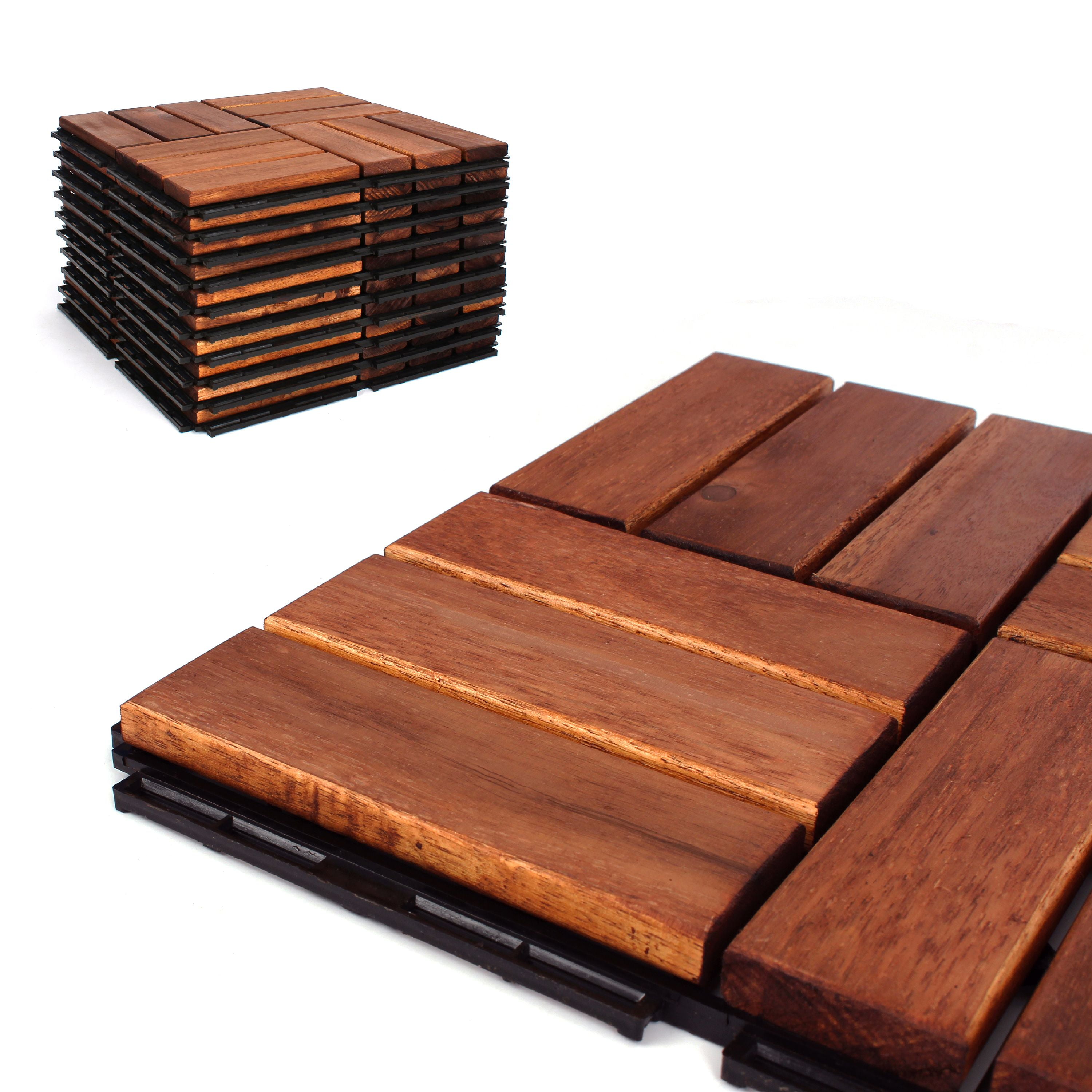
Follow up applications should be carried out every 12 months or so, depending on your climatic conditions, the degree of exposure to sun and rain, and the recommendations of the decking oil/sealer manufacturer. For maximum weather protection, enhanced resistance to mildew or mold formation and to reduce the rate at which the tiles will naturally fade when exposed to direct sunlight, we strongly recommend applying a good quality decking oil/sealer to the deck tiles as soon as practical after installation.

Step 5 – Caring for your deckĪlthough our Ipe wood tiles are coated with a decking oil at the factory, this is a very simple decking oil which is basically designed to enhance the initial appearance of the tiles. Mitered corner edging is available (in pairs) for external corners.

#Interlocking patio tiles professional#
To provide a neat, professional finish to your design, straight edging is available which clips onto the edge of the outer row of tile.

You can also cut the tiles to fit around posts or pipes. SwiftDeck Ipe wood tiles can be easily cut with a handsaw, jigsaw or other power saw, taking care the saw does not contact any of the screws in the base of the tile. With the last row of tiles, you may need to cut some tiles to fit any remaining gap. If installing the tiles in an area confined by walls on opposite sides, it's important that a small gap is left against the wall to allow for expansion of the tiles which occurs not only due to temperature changes but also due to expansion of the wood when it absorbs moisture. Repeat this simple "snap in place" process, working in a diagonal direction across the area. Push the second tile down firmly so that both tiles lock firmly together. After you have positioned the first tile in the corner of your workspace, take a second tile and align the connecting tabs on one edge of the first tile with the corresponding connecting tabs on the second tile. When installing interlocking deck tiles, it’s best to start laying the tiles from one of the outer corners of the area you want to cover and work inwards towards the exterior wall. To provide good drainage under the tiles, the surface should normally slope slightly away from the outer wall of any structures. On hard dirt surfaces, sand or gravel, the surface should firstly be leveled, well compacted and then covered with a weed control barrier. If the surface is particularly rough or cracked, it’s advisable to level the surface with a suitable exterior patching compound or filler.
#Interlocking patio tiles install#
Step 2 - Prepare the surfaceĪlthough you can install interlocking deck tiles on dirt, rocks, or asphalt, there should be no large cracks, bumps or depressions which could cause the tiles to lie unevenly or “rock” on the surface. You might find it helpful to use our Visualizer to check the difference in appearance between basketweave or parallel designs for example. Just follow these basic steps: Step 1 – Design your deckīefore installing interlocking deck tiles on dirt, It’s a good idea to sketch your proposed design on paper. You can easily create unique patterns, designs and borders by aligning the tiles in different directions or by using a combination of different tile styles. And remember, if you don’t like the first design you’ve put down, you can remove and re-install interlocking deck tiles in a different arrangement. Non-Slip Matting Accessories & Adhesives.Heated Snow Melting Mats and Foot Warmer Mats.Soft Floor Tiles / Children's Play Matting.Non-Conductive and Dielectric High Voltage Rated Floor Mats.

Anti-Static / Non Conductive Anti-Fatigue Mats.


 0 kommentar(er)
0 kommentar(er)
